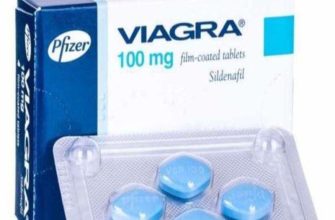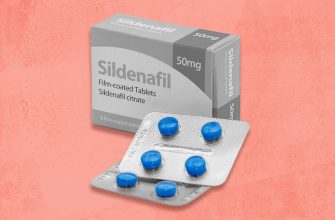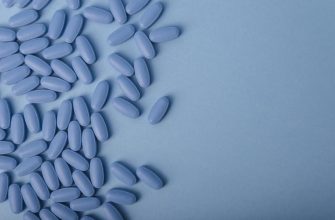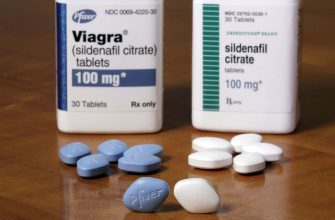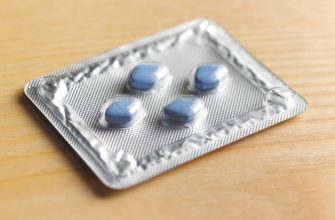Want to understand the history of erectile dysfunction treatment? Focus on the pre-Viagra era, a time marked by less effective and often more invasive options. We’ll explore the common approaches used before the revolutionary blue pill arrived and what men faced when dealing with this sensitive condition.
Prior to 1998, treatments primarily involved injecting medications directly into the penis (intracavernosal injections), a method associated with pain and inconsistent results. Another approach, vacuum erection devices, relied on mechanical suction to achieve an erection, a process some found cumbersome and uncomfortable. Penile implants, a surgical procedure, represented a more permanent solution, but carried significant risks and recovery time.
Hormone replacement therapy was also sometimes considered, focusing on addressing underlying hormonal imbalances that could contribute to ED. However, this treatment path wasn’t always successful and needed careful monitoring. Lifestyle changes, including diet modification and increased exercise, were also recommended, but their effectiveness varied greatly amongst individuals and often required considerable commitment.
Understanding these earlier methods highlights the significant impact Viagra had on treating erectile dysfunction. The shift to oral medication marked a major advancement, providing a more convenient and widely accessible solution for many men.
- Before Viagra: A Look at Erectile Dysfunction Treatments Past
- Early Medical Approaches to Erectile Dysfunction
- Hormonal Therapies and Injections
- Surgical Interventions
- The Psychological Perspective: Understanding the Mind-Body Connection in ED
- Addressing Relationship Issues
- Anxiety and Depression’s Role
- Performance Anxiety: Breaking the Cycle
- Herbal Remedies and Traditional Treatments for Impotence
- Other Botanical Options
- Traditional Practices and Considerations
- Disclaimer
- Mechanical Devices and Their Role in Treating Erectile Dysfunction
- The Rise of Injections and Other Invasive Procedures
- Penile Implants: A More Permanent Solution
- The Limitations and Side Effects of Pre-Viagra Treatments
- Penile Implants: A Surgical Option
- Hormone Replacement Therapy: A Limited Approach
- The Impact of Pre-Viagra Treatments on Men’s Lives and Relationships
Before Viagra: A Look at Erectile Dysfunction Treatments Past
Before the advent of Viagra, men relied on various approaches to manage erectile dysfunction (ED). Penile injections of papaverine, a vasodilator, offered a direct method to increase blood flow. This treatment, while effective for many, carried risks of prolonged erection (priapism) and pain at the injection site.
Vacuum erection devices (VEDs) provided another option. These devices create a vacuum around the penis, drawing blood in and causing an erection. VEDs are generally considered safe, though some men experience discomfort or bruising. Their use requires patience and consistent application.
Hormone replacement therapy was a treatment choice for men with ED linked to low testosterone levels. This involved administering testosterone through injections, patches, or gels. However, this approach only addresses ED caused by hormonal imbalances and carries potential side effects such as prostate enlargement.
Surgical options, such as penile implants, were available for severe cases of ED unresponsive to other treatments. These procedures involve placing inflatable or malleable rods inside the penis to create an erection. While offering a permanent solution, surgery carries its own set of risks and complications requiring careful consideration.
Important Note: This information is for educational purposes only and does not constitute medical advice. Consult a healthcare professional for diagnosis and treatment of ED.
Early Medical Approaches to Erectile Dysfunction
Doctors historically prescribed a range of treatments, often focusing on improving overall health. Dietary changes, including increased consumption of foods believed to boost libido like oysters and asparagus, were common. Herbal remedies, such as ginseng and yohimbe, also featured prominently, although their efficacy varied widely.
Hormonal Therapies and Injections
Testosterone replacement therapy addressed hormonal imbalances causing ED. However, this approach was not always successful and carried potential side effects. Physicians also experimented with injecting medications directly into the penis to induce an erection. These injections, while effective for some, were often painful and inconvenient.
Surgical Interventions
Surgery involved procedures to correct underlying vascular problems contributing to ED. These procedures aimed to improve blood flow to the penis. While potentially helpful for certain patients, surgical intervention carried its own set of risks and complications.
Pumps and implants represented another avenue of treatment. Penile implants offered a more permanent solution, although with the possibility of complications. Vacuum erection devices offered a less invasive, albeit temporary, solution.
The Psychological Perspective: Understanding the Mind-Body Connection in ED
Stress significantly impacts erectile function. Studies show high stress levels correlate directly with a higher incidence of erectile dysfunction (ED). Managing stress through techniques like mindfulness meditation or regular exercise can improve both mental and physical well-being, positively affecting sexual health. Consider exploring these options with a therapist or healthcare professional.
Addressing Relationship Issues
Relationship problems frequently contribute to ED. Open and honest communication with your partner about concerns and anxieties is vital. Couples therapy can provide a safe space to address these issues and improve intimacy. Seek professional help if communication struggles persist, impacting your relationship and sexual health.
Anxiety and Depression’s Role
Anxiety and depression are common mental health conditions linked to ED. These conditions affect neurotransmitters influencing sexual arousal. Treatment for anxiety and depression, such as therapy or medication, often alleviates ED symptoms. Consult a psychiatrist or therapist to determine the best course of treatment tailored to your individual needs. Early intervention is key for better outcomes.
Performance Anxiety: Breaking the Cycle
Performance anxiety fuels the cycle of ED. This anxiety stems from the fear of failure, creating a self-fulfilling prophecy. Cognitive Behavioral Therapy (CBT) effectively helps individuals reframe negative thoughts and behaviors related to sexual performance, breaking the anxiety cycle and improving sexual confidence. CBT techniques can empower you to manage this fear and enhance your sexual experiences.
Herbal Remedies and Traditional Treatments for Impotence
Yohimbe bark extract, derived from the Pausinystalia yohimbe tree, shows promise in improving erectile function. Studies suggest it works by increasing blood flow to the genitals. However, it’s crucial to consult a doctor before use, as it can interact with certain medications and cause side effects like anxiety and increased blood pressure.
Other Botanical Options
Ginseng, particularly red ginseng, has a long history of use for improving sexual function in traditional medicine. Animal studies indicate potential benefits, but human research remains inconclusive. Another option is horny goat weed (Epimedium species). Some research suggests it may improve erectile function, possibly by increasing nitric oxide levels. Remember, these are not magic bullets and results vary widely.
Traditional Practices and Considerations
Acupuncture, a traditional Chinese medicine technique involving the insertion of thin needles into specific body points, is sometimes used to treat erectile dysfunction. While some studies suggest potential benefits, more research is needed to confirm its effectiveness. Lifestyle changes also play a significant role. Regular exercise, a balanced diet, and stress reduction techniques can all positively impact sexual health.
| Remedy | Potential Benefits | Cautions |
|---|---|---|
| Yohimbe | Increased blood flow | Potential drug interactions, side effects |
| Ginseng | Improved sexual function (some studies) | Limited human research |
| Horny Goat Weed | Possible nitric oxide increase | Further research needed |
| Acupuncture | Potential benefits (limited evidence) | Requires trained practitioner |
Disclaimer
The information provided here is for educational purposes only and does not constitute medical advice. Always consult a healthcare professional before starting any new treatment or supplement, especially if you have underlying health conditions or are taking other medications. Self-treating can be risky.
Mechanical Devices and Their Role in Treating Erectile Dysfunction
Before Viagra, men relied heavily on mechanical devices to address erectile dysfunction. These offered a tangible, hands-on approach.
- Vacuum Erection Devices (VEDs): These consist of a plastic cylinder placed over the penis and a pump to create a vacuum, drawing blood into the penis and causing an erection. Proper use involves carefully following instructions to avoid injury. VEDs are often recommended for temporary erectile assistance or as a treatment option for men who cannot tolerate oral medications.
- Penile Implants: These are surgically implanted devices offering a more permanent solution. Two main types exist: malleable (bendable) rods and inflatable implants. Malleable implants provide a consistently rigid penis, while inflatable devices allow for a more natural appearance when not erect. A doctor’s consultation is absolutely necessary before considering this option, as it’s a surgical procedure with potential risks and recovery time.
Success rates vary depending on the device and individual factors. Patients should discuss their medical history and expectations with their doctor to determine the suitability of any mechanical device.
- VEDs: Generally offer good short-term results for many men. However, prolonged use may cause discomfort or bruising. Regular follow-up with a healthcare provider is important.
- Penile Implants: Provide a long-term solution for erectile dysfunction, but the success hinges on proper surgical placement and post-operative care. Mechanical failure can occur, though it’s relatively rare. Infection risk exists, so following post-surgical instructions is paramount.
Remember, a healthcare professional should guide you through the selection and use of any device. They will help you determine if mechanical treatment is appropriate for your specific condition and health profile.
The Rise of Injections and Other Invasive Procedures
Before Viagra, men experiencing erectile dysfunction often relied on injections of papaverine or prostaglandin E1 directly into the penis. These treatments, while effective for many, carried a risk of priapism (a prolonged, painful erection) requiring immediate medical attention. Success rates varied, and the process itself was undeniably inconvenient.
Penile Implants: A More Permanent Solution
Another option available was penile implant surgery. This involved the surgical placement of inflatable or malleable rods within the penis to achieve an erection. While offering a more permanent solution than injections, this procedure came with significant risks including infection, mechanical failure, and nerve damage. The recovery time was considerably longer, demanding a larger commitment from the patient.
Vacuum erection devices (VEDs) also gained traction. These devices create a vacuum around the penis, drawing blood in and producing an erection. While less invasive than injections or surgery, VEDs required consistent use and were not always reliable for achieving satisfactory results. Many patients found them cumbersome and not a long-term practical solution. The limitations of these pre-Viagra methods highlighted the need for a more convenient and less invasive treatment option, a need later fulfilled by the arrival of oral medications.
The Limitations and Side Effects of Pre-Viagra Treatments
Pre-Viagra options often involved injections directly into the penis (intracavernosal injections), resulting in pain, bruising, and prolonged erections (priapism) in some cases. These injections used medications like papaverine, phentolamine, and prostaglandin E1. Success rates varied considerably, and consistent use wasn’t always easy or comfortable. Another approach, vacuum erection devices, created a vacuum around the penis to draw blood in, producing an erection. While relatively safe, these devices sometimes caused discomfort and could be ineffective for many men.
Penile Implants: A Surgical Option
Penile implants, surgically inserted devices, offered a more permanent solution but carried higher risks, including infection, mechanical failure, and scarring. They also required surgery and recovery time. These options lacked the convenience and ease of use later provided by oral medications.
Hormone Replacement Therapy: A Limited Approach
Hormone replacement therapy was sometimes considered, primarily for men with low testosterone. However, it didn’t directly address erectile dysfunction in many cases and carried potential side effects such as increased risk of prostate cancer and cardiovascular problems. Its effectiveness in treating ED varied greatly depending on the underlying cause of the problem.
The Impact of Pre-Viagra Treatments on Men’s Lives and Relationships
Pre-Viagra treatments significantly impacted men’s lives and relationships, often negatively. Many men felt frustrated and inadequate due to erectile dysfunction (ED).
- Psychological Impact: Low self-esteem and depression were common. Many men avoided intimacy, damaging their relationships. Studies show a strong correlation between ED and relationship dissatisfaction.
- Relationship Strain: The inability to achieve or maintain an erection created tension and conflict. Partners often felt rejected or unloved, leading to resentment and distance.
- Treatment Limitations: Previous treatments, such as injections or penile implants, carried significant side effects and were invasive. This often deterred men from seeking help, further exacerbating the problem.
The lack of effective and easily accessible treatments led to many men suffering in silence. They avoided seeking help due to embarrassment or fear of invasive procedures. This affected their overall well-being and their relationships substantially.
- Communication Breakdown: Open communication about ED was often absent, worsening the emotional distance between partners.
- Alternative Solutions: Men often resorted to unproven remedies or supplements, which rarely provided relief and sometimes caused harm.
- Medical Interventions: Available medical treatments presented drawbacks such as pain, discomfort and potential complications, thus discouraging many from seeking help.
The arrival of Viagra dramatically altered this situation, providing a more convenient and effective treatment option.


